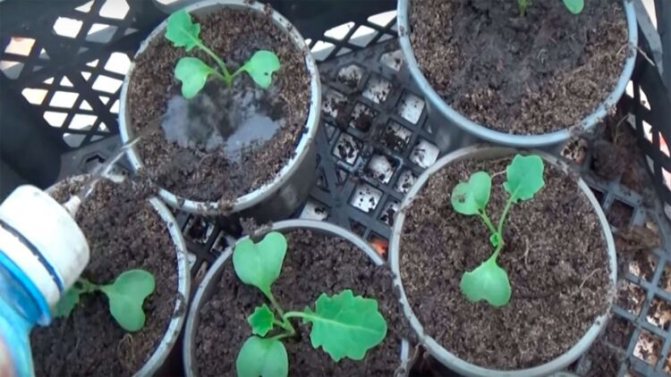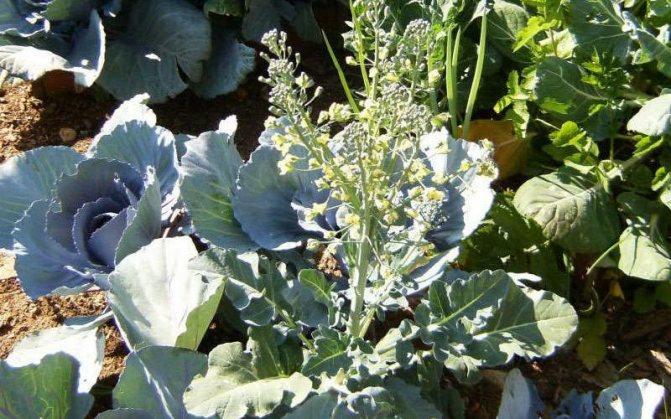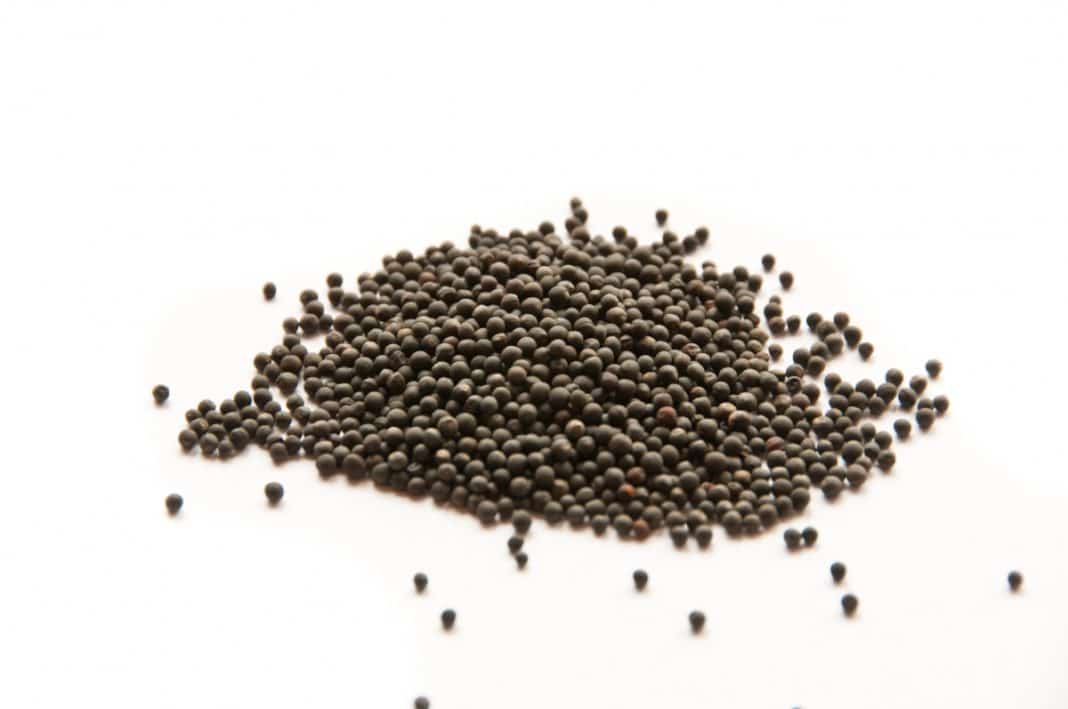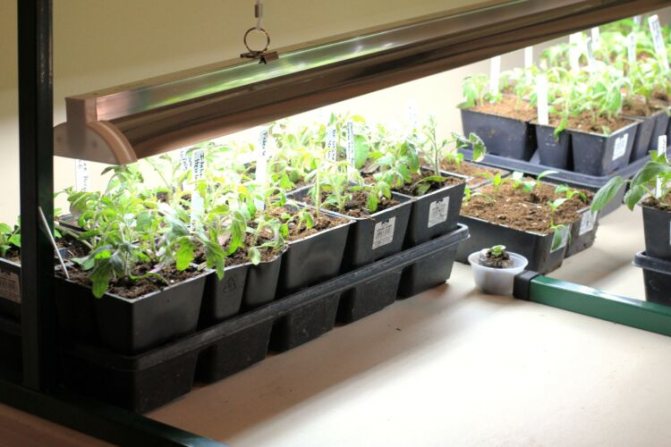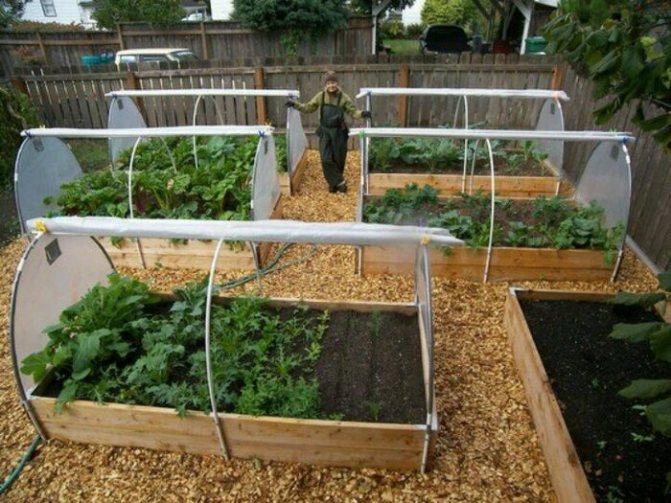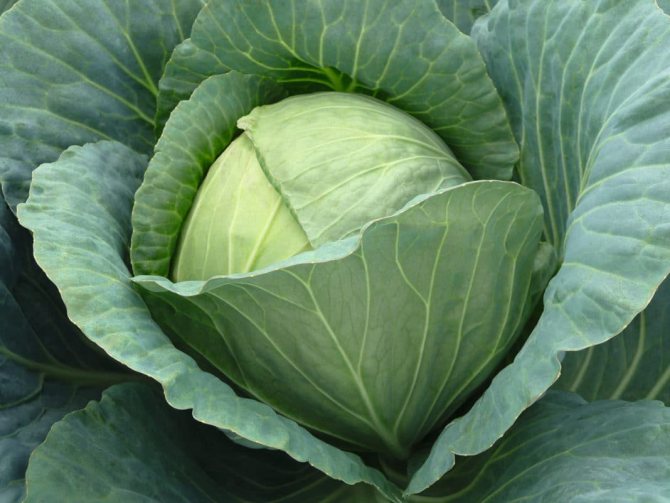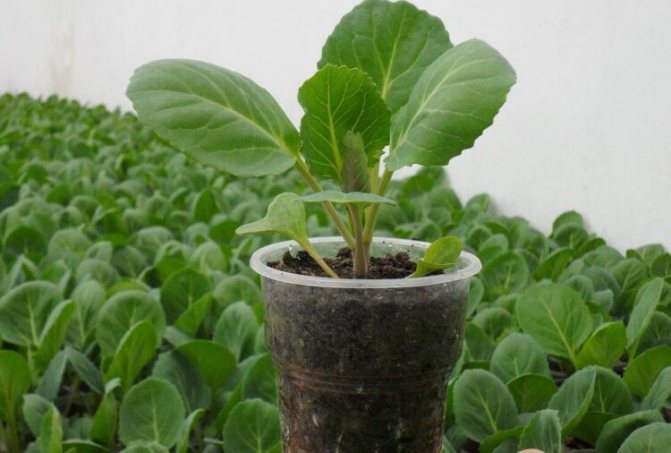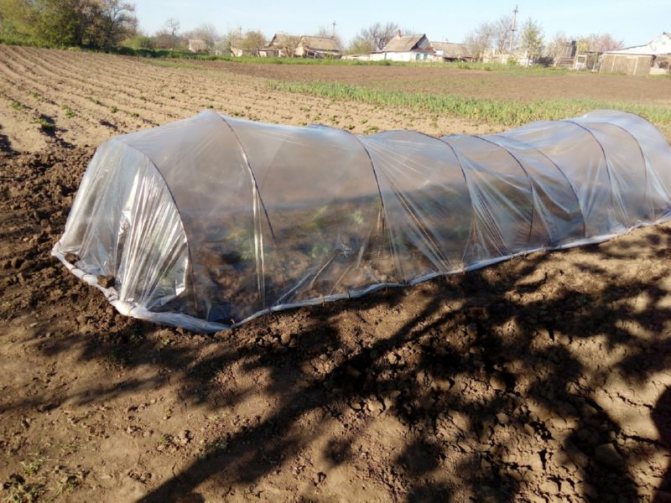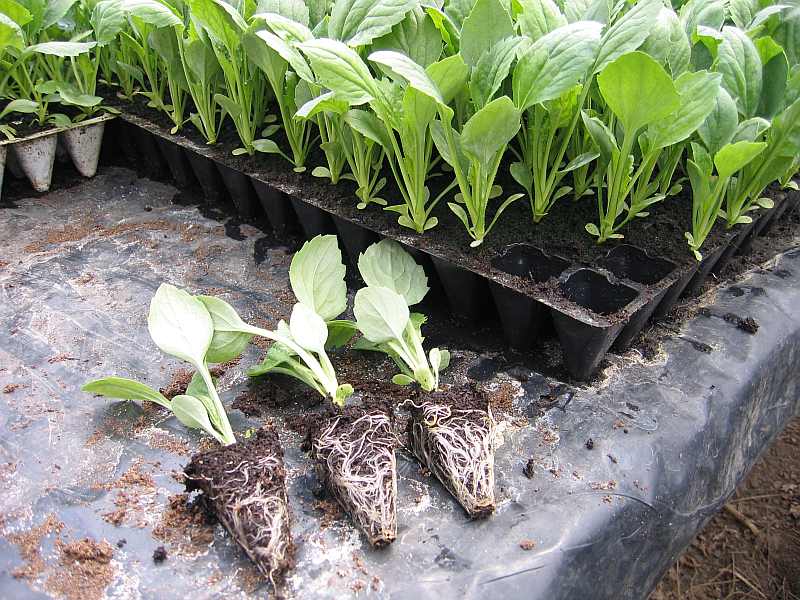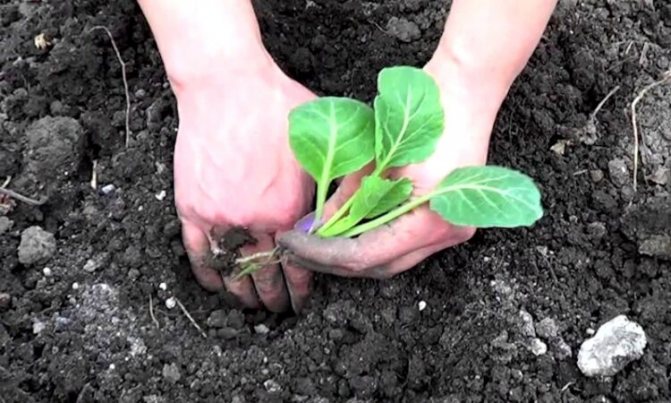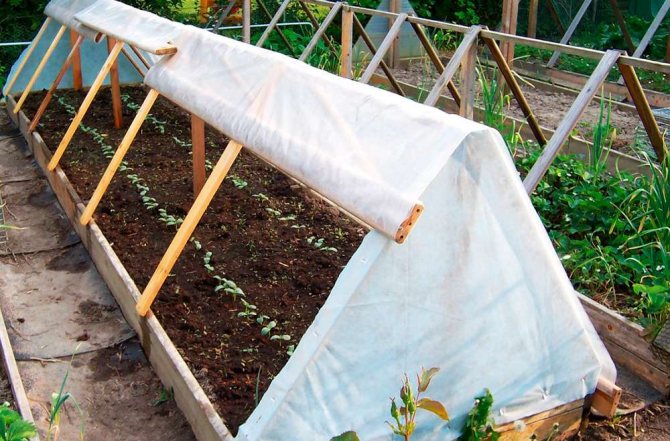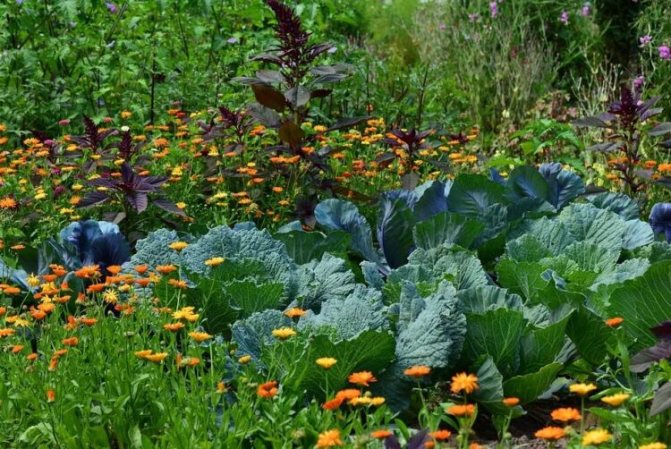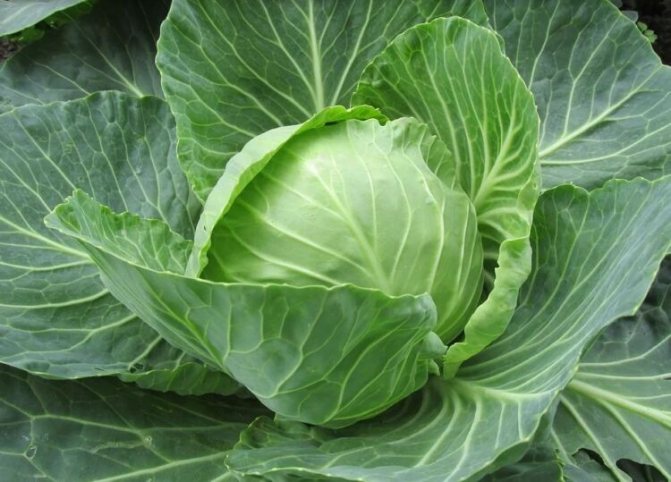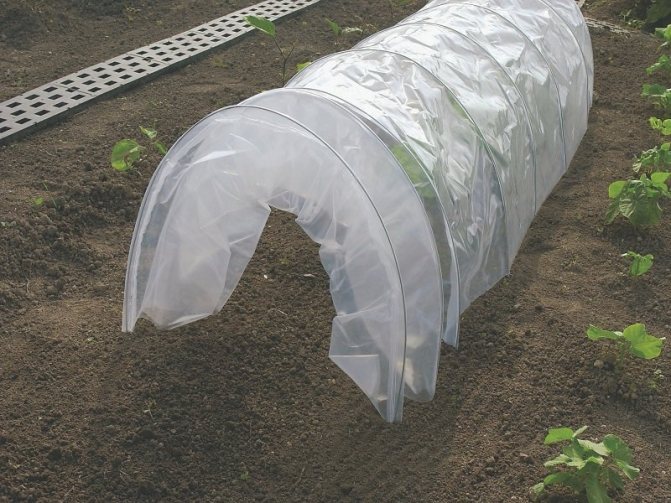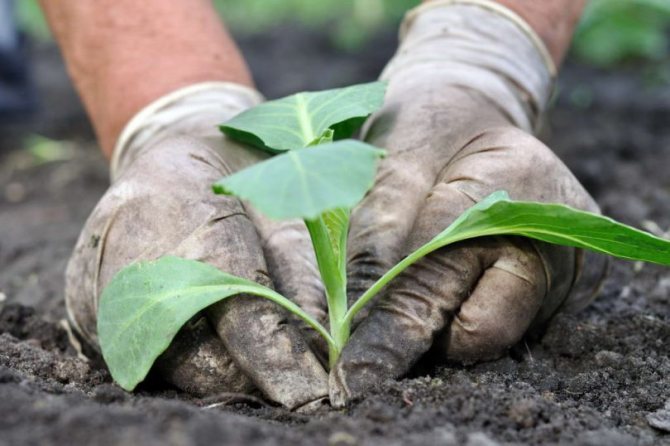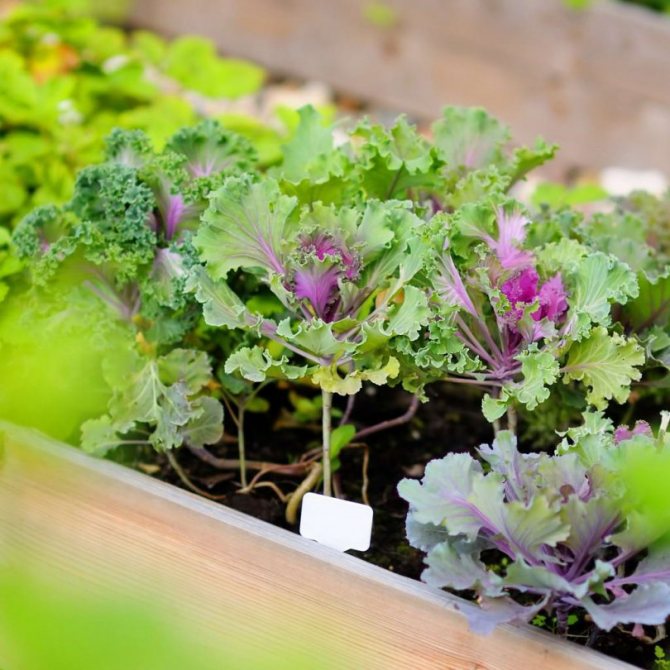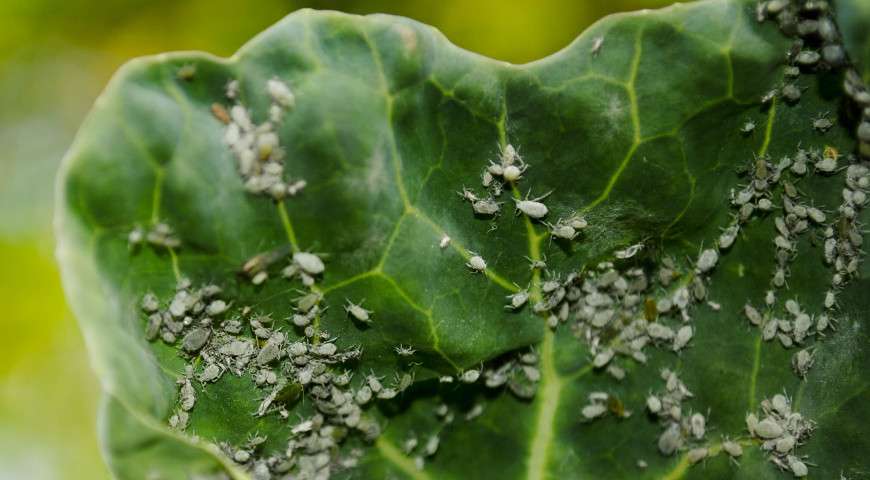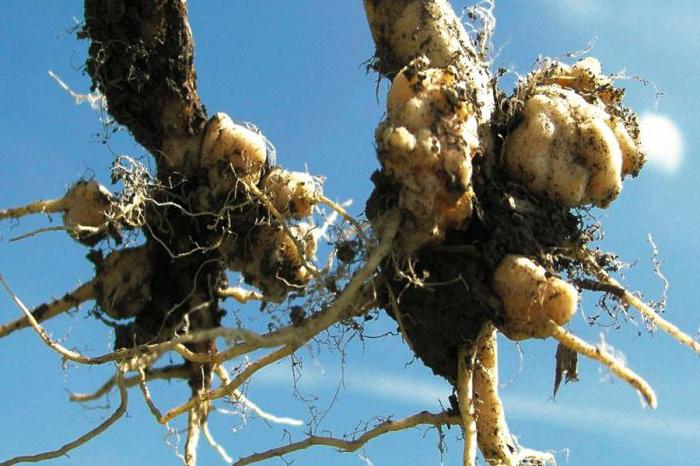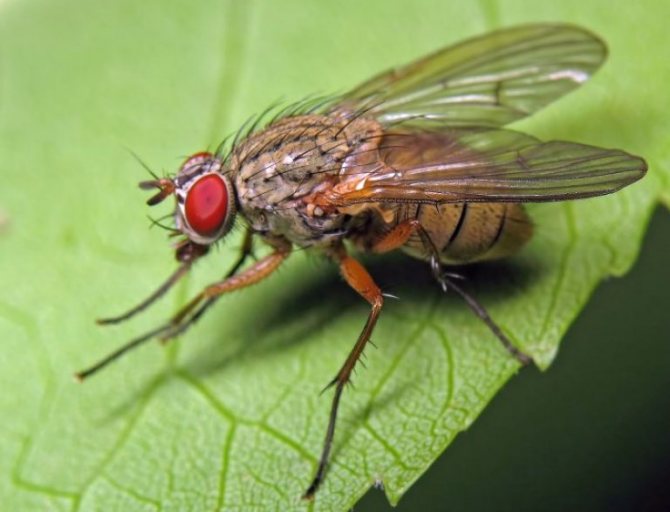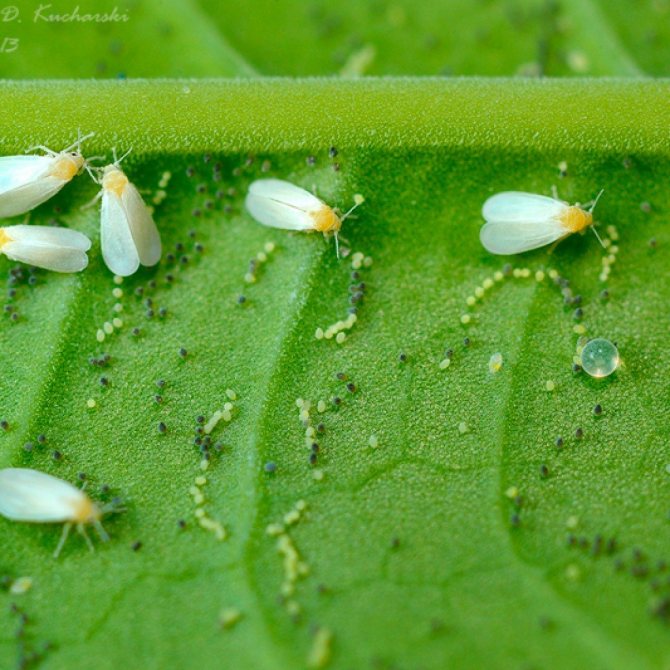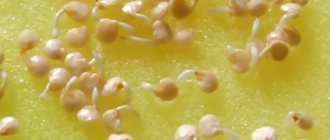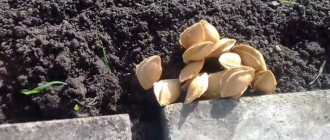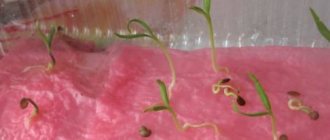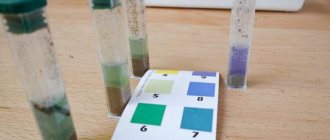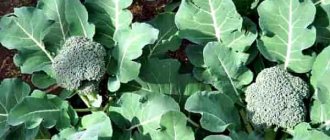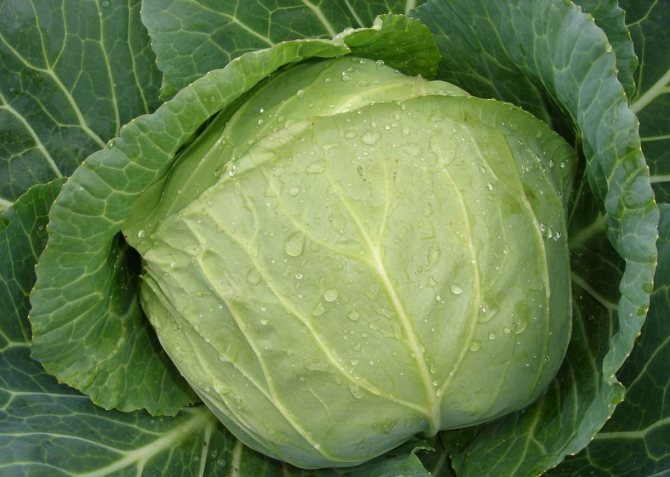
Cabbage is an unpretentious vegetable crop that gives seeds in the second year of life. To do without buying seed, it is enough to leave a couple of forks of the variety you like. You can get high-quality seeds at home, if you adhere to the rules of agricultural technology and know how to store the mother plant in winter. Compliance with all the recommendations of experienced gardeners allows you to get a good harvest of pods.
Erroneous testis
Sometimes it happens that a plant of this culture in the first vegetative year suddenly took and released a shoot with flowers. Those who decide to collect such seeds from cabbage for further planting usually remain extremely unhappy. Seeds show poor germination, sprouts are weak, most do not set heads.


Cabbage is a two-year-old plant and must go through all stages of development for normal fruiting.
Therefore, a vegetable grower who has decided to get cabbage seeds at home needs:


- choose the right heads of cabbage;
- dig up queen cells in time and create conditions for vernalization;
- prepare overwintered heads of cabbage for planting;
- prepare the soil and plant the stumps in the ground;
- take care of the seed plant throughout the season, huddle, water, tie up and remove excess shoots;
- harvest mature pods in time.


Cabbage seeds: how to get them, step by step instructions
To get cabbage seeds of your favorite variety, you must strictly follow the instructions and recommendations regarding this process. Mid-season and late varieties of cabbage are best suited for collecting seeds at home. At the same time, from all the heads that have ripened by autumn, those in which the varietal characteristics are most pronounced are selected. Such heads of cabbage act as queen cells. They are preserved in a special way, and with the onset of spring heat, they are again planted in the garden, already as seed plants. It is from them that the best seed is harvested in the future.
By what principle are mother cells selected?
The quality of the seeds themselves and the cabbage that will grow from them largely depends on the correct choice of mother plants. A good mother plant assumes the following characteristic features:
- preservation of the maximum number of characteristics of the variety in a mature plant;
- no damage caused by diseases and pests;
- large head;
- thin stump;
- short spine;
- minimum number of outer sheets.
It is worth noting that in some varieties of white cabbage, the heads on the cut resemble a horizontally stretched oval. In this case, the flattest heads of cabbage are used for queen cells.
Attention! For bushes that are supposed to be used as mother plants, a separate area is allocated. Moreover, it is recommended to plant cabbage seeds immediately in open ground. In this case, the vegetation will have a more developed root system by the time of harvest, which will contribute to long-term storage.
How to keep heads of cabbage until spring?
Ripe queen cells are collected for storage. To do this, carefully remove the head from the soil along with the root system. It is imperative not to damage the roots or the stump. Then all the rosette leaves are cut off with a sharp knife. Only 2-3 cover sheets are left in place of the head.In this form, subject to the conditions, the plant is stored until spring.
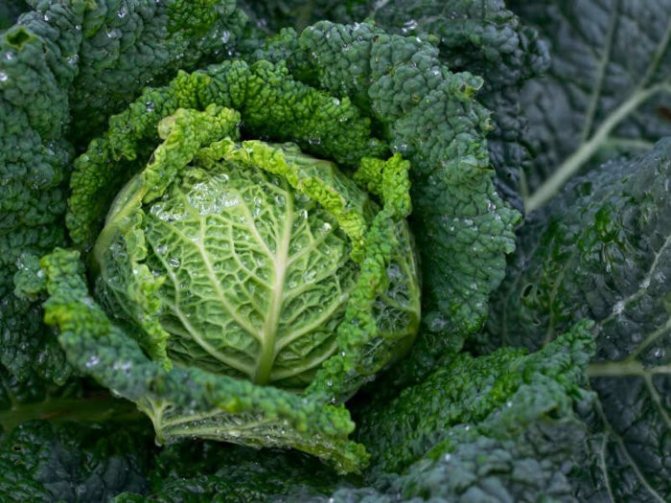

Head of cabbage
Collecting mother liquors is desirable before the first frost. If the plant still falls to -5 degrees or more, harvesting should be postponed for a week. During this time, the cabbage will move away and get used to such conditions.
After successful collection, the vegetation is determined for storage. The following nuances of the procedure are observed:
- the mother liquor is dipped with a root in a liquid talker made of clay and allowed to dry;
- to provide protection from rot, sprinkle the stump and leaves with crushed chalk on top;
- store mother liquors separately from cabbage intended for consumption;
- plants are either hung vertically, stumped up, or laid out on wooden shelves so that there is a certain distance between them;
- humidity at the storage location should vary between 80–85%;
- the recommended temperature is 0-1 degrees.
The optimum storage room temperature is especially important. If it drops below zero, the mother liquor will quickly freeze after disembarkation. And if it rises to 8-10 degrees, the plant in the open field instead of the supposed arrow will put out a lot of green leaves, which is also not suitable for collecting seeds.
The storage temperature of the culture is increased (up to +5 degrees) only 20-30 days before the planned date of planting mother liquors in the ground. This will enhance the metabolism in the tissues, which will further accelerate the survival of the culture in the garden.
Important! Such cabbage should be kept in complete rest. Therefore, it is not recommended to shift and clean it.
Planting queen cells
Planting of pots, depending on the region, is planned for the period from late April to early May. A month before, each mother plant is carefully examined, during which rotted roots or leaves are identified and immediately removed. The head of cabbage itself (if the mother liquors were stored in this form) is cut with a sharp knife so that in its place there remains a cone narrowed upwards with a base diameter of no more than 20 cm.
The next stage in the preparation of vegetation for planting is the growing of mother plants. To do this, 15–20 days before planting, all stumps are laid in the open air in stacks, turning the root inward. Each layer of roots is sprinkled with an abundant amount of humus and watered with manure diluted in water on top. In this form, stumps develop well on the street, but you need to carefully monitor the temperature regime so that the cabbage roots do not freeze.
For planting, choose an area where cruciferous plants have not grown over the past 3-4 years. It has been fertilized since autumn. For this, manure is introduced into the soil in an amount of 6 kg for each square of the area. In spring, the soil is also fed with potash (10 g / sq. M) and phosphorus fertilizers (20 g / sq. M). After applying top dressing, the site is carefully dug up.
The planting process itself is carried out as follows:
- On the cleared area, dig holes with an interval of 50 cm in a row and a row spacing of 70 cm.
- Pour 300 g of humus and 20-25 g of phosphates into each depression and mix them with the ground.
- In a separate container, a solution is prepared from clay and liquid mullein. The root system of each stump is dipped into the resulting mass before planting.
- The plant is placed in the hole at a slight slope. After that, a little earth is poured in and compacted in the area of \ u200b \ u200bthe roots. Then the rest of the soil is poured, so that the top layer of soil is located exactly under the base of the head of cabbage.
- The filled hole is watered and the surface is loosened.
If your neighbors also have cabbage growing nearby in the garden, there is a risk of cross-pollination of the crop. In this case, a piece of gauze is put on for each head of the mother plant, which is fixed at the base of the stump.
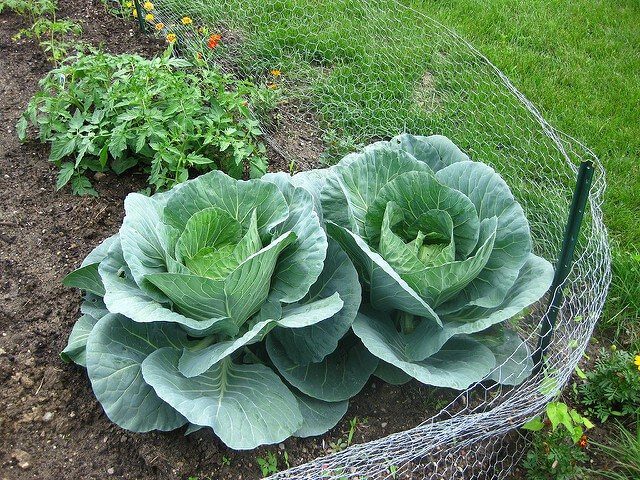

Dangerous neighborhood
Cabbage care
After planting, the testes should be looked after in a special way.For the first week, if there is still a chance of frost, it is better to cover the beds with a thick layer of straw. It will help keep you warm. After the specified period, the seedlings will already be taken, they will get stronger, and the straw can be removed.
Watering cabbage beds is carried out as the soil dries up at the base of the stump. As a rule, the culture is watered every 7-10 days. But a more accurate schedule depends on the climatic conditions of the region. If the weather is hot, watering is carried out more often. The procedure is carried out exclusively in the evening. In this case, the water should be settled and warmed up in the sun for a day. Periodically, the soil is fluffed for better aeration of the roots and the passage of moisture.
Timely feeding is a prerequisite for good growth of the testes. For the first time, cabbage is fertilized 2 weeks after planting in the ground. For this, a mullein dissolved in water is used. Watered at a rate of 3 liters for each bush.
The second feeding is carried out right before the flowering of the crop. At this time, the plant needs nitrogen, so nitrophosphate is added to the soil. The dosage is 25 g per square meter.
In addition to the above general points of care for the testes, there are more specific ones, which include:
- Removing old leaves. Those leaves with which the plant wintered are cut off with roots two weeks after planting. If this is not done, the vegetation will start to rot.
- Garter bushes. When such a bush fires an arrow, it is immediately tied to a peg driven into the ground. This will prevent the stems from breaking off.
- Removing excess parts of the bush. If excessively large shoots appear during the flowering process, they are removed, since they do not have time to ripen, but they draw a lot of juice. Extra stems are also cut from the bush, leaving some of the strongest and most productive.
On average, the flowering process of cabbage lasts for 25-30 days. Further, pods with seeds are formed on the bushes, which ripen for another 50 days.
Collecting cabbage seeds
After the specified time period, you must immediately collect the cabbage seeds. Ripe pods turn yellowish, and the seeds themselves acquire a brownish tint. At this time, all the testes are cut at the base and tied together in small tight bundles, which are then turned over and hung in a dry place to ripen.
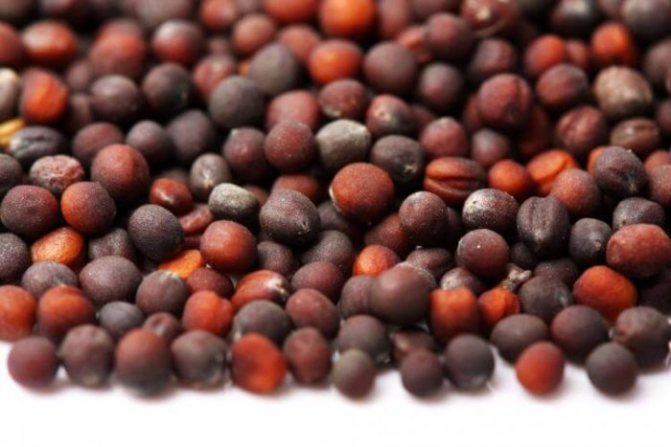

Cabbage seeds
When drying, it is important that the pods do not open completely. As a safety net under the sheaves, a piece of cloth is underlain, onto which the seeds will fall if some of them nevertheless open.
When the pods are completely dry, they are separated from the stems. Next, the dry parts of the pods are very carefully shaken off the seeds, and the debris remaining in the process is removed by winding.
The collected seeds, if they were not damaged during the harvesting process, remain viable for 3-4 years. Therefore, the stock can be made at once for several seasons ahead.
Uterus
Before growing cabbage seeds, it is necessary to select and correctly send mother liquors for wintering. Among the harvest ready for harvest, you need to notice the most beautiful healthy heads of cabbage with the following characteristics:


- not overgrown;
- the most appropriate to the description of the cultivated variety;
- not overfed with nitrogen;
- the strongest;
- on a thin outer stump;
- the most complete relative to the mass of the rest of the plant.
Selected heads of cabbage are carefully dug up together with the root until the first frost. The leaves of the cabbage are cut off, leaving 2-3 near the head of cabbage and sprinkled with wood ash or chalk. It is advisable to dip the rhizome in a clay mash to avoid drying out.
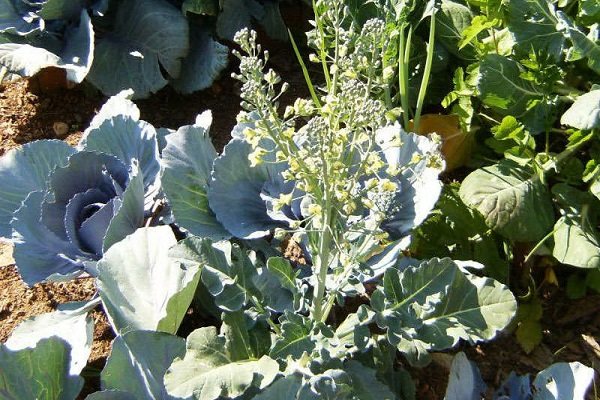

Important! If the plants come under early frost, then they are left in the ground for another week to recover.
See also
How to properly grow and care for cauliflower outdoorsRead
The specifics of growing and caring for cabbage beds in the regions
The timing of planting, harvesting white cabbage depends on the climatic conditions of the region.
In outskirts of Moscow
Suitable for cultivation varieties resistant to temperature fluctuations, not very light-loving varieties, ripening until mid-October. The early Dumas variety is popular; mid-late - Slava, Valentina; late - Aggressor, Creumont, Gift.
In Belarus
The humid temperate climate of Belarus, sandy, loamy soils are suitable for growing cabbage. Here it is grown on personal plots, on large areas of agricultural firms. Early fruitful varieties are cultivated: Zarya, Malachite, Zolotoy Hectar, late ones - Slava, Moskovskaya Pozdnyaya.
Vernalization
The mothers are laid out or hung in a dark basement with a temperature of 1-2 ℃ for the whole winter. Cabbage, for normal fruiting, must undergo vernalization. If the temperature is above 6-8 ℃, the metabolism will not slow down in the head of cabbage and the process of formation of generative organs will not start.
With further planting, the plant will simply give out a large number of leaves instead of peduncles. In winter, it is better not to disturb the heads of cabbage, to minimize exposure to light. A month before the planned planting, the temperature in the storage is slightly increased to + 5-6 ℃.


Pests
Pest damaged cabbage
White cabbage is susceptible to attack by various pests: white cabbage, cruciferous flea, slugs and others. This culture is also affected by fungal diseases. Therefore, during the entire growing period, it is necessary to carry out protective, preventive and therapeutic measures. Today, you can purchase effective means to combat garden misfortunes and process plantings according to the instructions attached to the preparations. Folk remedies, proven for decades, also give a good result.
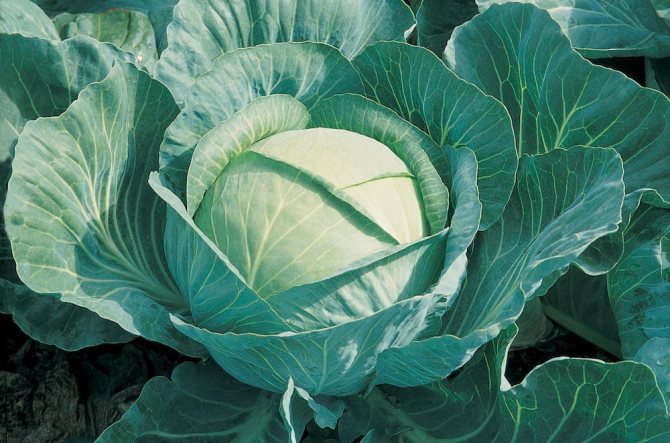

The recipe for an effective means for spraying plants from cabbage whites, aphids and other insect pests: boil 400 g of tobacco dust for 2 hours in 2 liters of water, then strain the broth, add laundry soap in the amount of 50 g and bring the volume of the solution up to 10 liters. Spray the cabbage with the resulting drug.
Preparing the mother liquor for planting
At the end of March, the mother liquors take out and cut the stump in the form of a cone. A base of 15-20 cm is left at the bottom and sharpened up. Examine the rhizome, remove rotten areas.
Then the future testicles need to be "awakened" and germinated:
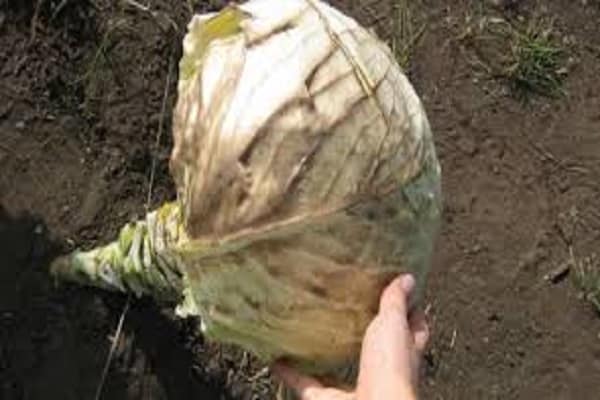

- the roots of cut stumps are dipped in slurry;
- stacked upside down;
- sprinkle with peat or humus;
- leave in the fresh air for 2-3 weeks, protecting from frost.
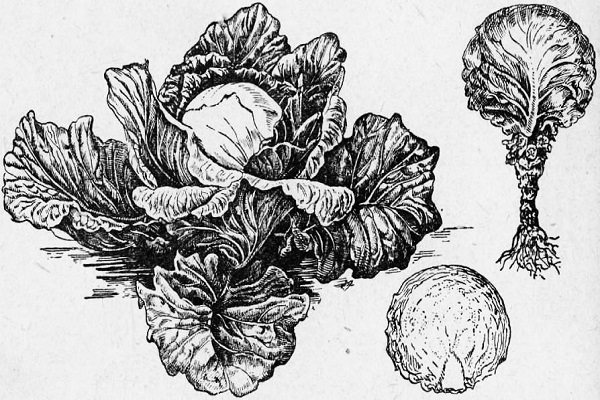

Use in landscape design
To decorate parks, gardens, personal plots, five varieties of culture are used:
Plants with tall stems look great in single plantings. By combining the size of the rosettes, the color and shape of the leaves, the height of the stems, you can create various ornaments, form flower beds in the form of a circle, and give plantings all kinds of fancy outlines.
The flowers of ornamental cabbage will bring a joyful, carefree and even somewhat bohemian look to the landscape design. A mixture of paints will only emphasize the originality of such a solution. Small yellow flowers will touchingly look with green rosettes and corrugated leaves, when the cabbage has not yet acquired its spectacular color.
The plant blooms in July-August in the second year after sowing. To achieve this, in the fall, you need to cut off all the leaves, except for the top one, place the cabbage in wet sand and put it in a dry, dark, cool room. And in the spring, plant it in the ground.
Note! If you leave it on the windowsill, the culture may not bloom in summer, spending energy on growing leaves in the winter.
Ornamental cabbage combines beauty, taste and benefits, it is definitely worth taking the time and space on the site.
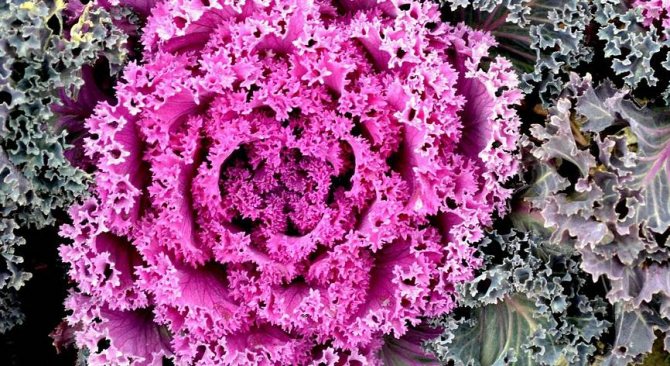

When creating a flower garden, every gardener wants him to delight with his variety of colors until late autumn and the first frost. But this is quite difficult to do, since most ornamental plants bloom only for a certain period of time, after which only green leaves remain or the shoots dry out and fall off altogether. In the fall, the flower garden becomes empty and monotonous. In this case, you need to try planting ornamental cabbage at least once.
Its variety of colors and shapes will amaze anyone. The plant belongs to biennial crops. For planting in the front gardens, seedlings of the first year of life are used. The height can vary from 20 to 120 cm. The color of the foliage is varied. Pink cabbage is very eye-catching. Such a plant will interest anyone. How to grow ornamental cabbage on your site?
Landing
The time for planting queen cells varies between late April and early May. And it is better not to be late, otherwise the flowering time will be too hot for cabbage. The optimum temperature for germination of pollen from this crop is 15-21 ℃. Therefore, the sooner the stumps begin to root and sprout, the better.
Cabbage easily tolerates cold snaps and, with timely covering with straw and non-woven fabric, it normally tolerates light frosts.
Only one variety of cabbage can be planted in one small area. Otherwise, all plants will be pollinated by bees. There should be at least 500 meters between plantings of different varieties.
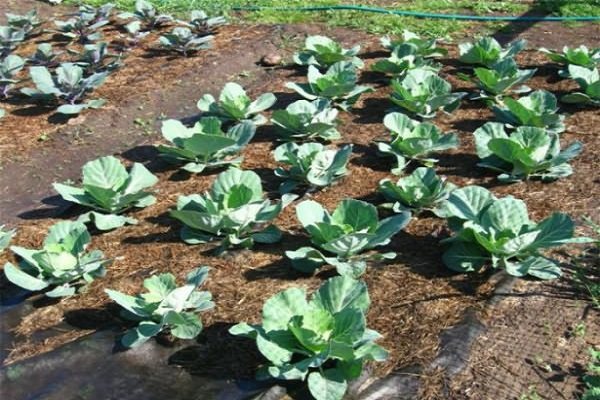

The soil is prepared nutritious, filled with organic matter and mineral fertilizers.
"Awakened" stalks are planted a little deeper than the heads of cabbage grew in the fall. The plant will give new lateral roots. The cabbage is watered abundantly and covered for a couple of weeks under a layer of straw or light-colored non-woven cloth.


After two weeks, the protection can be removed and the plants can be fed with organic (slurry solution 1:10, 3 liters per testis) or mineral fertilizers (nitroammofoska, nitrophoska).
See also
How and when to plant cauliflower in open groundRead
Repeat feeding before flowering. Plants need standard care, like ordinary cabbage seedlings: hilling, weeding, watering, loosening.
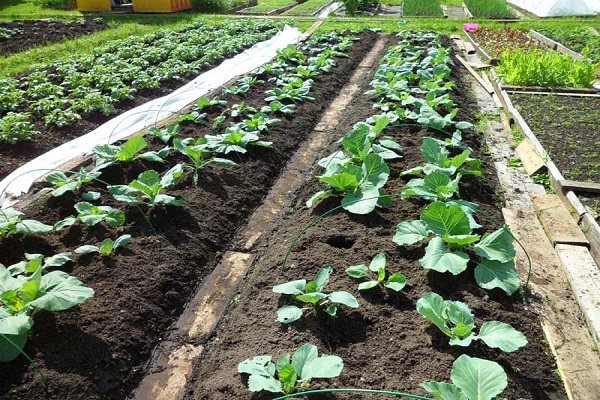

Another way to preserve the mother liquor
It is almost impossible to save mother liquors from early cabbage varieties in the usual way. But experienced gardeners have found a way:
- whole stump is cut out and stored in the basement;
- from autumn they are planted in pots with nutritious soil mixture;
- store seedlings in a dark basement at 1-2 ℃, like ordinary mother plants.
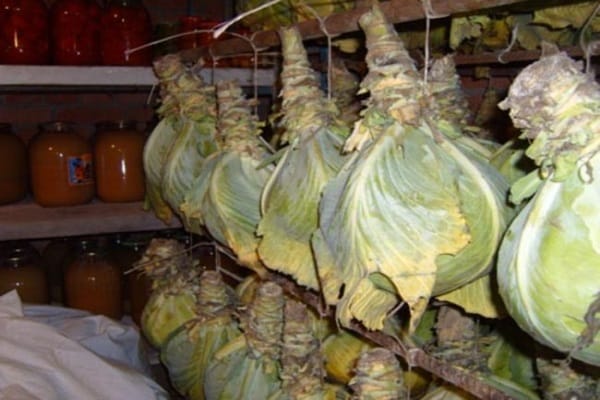

With this method, the stumps root well during the winter, and the apical bud remains healthy. In the spring, they make careful transshipment into open ground without disturbing the earthen coma.
Plants must shade for the first time.
Such growing of mother plants is also well suited for the northern regions of the central zone of our country. Too long a period of winter cold makes it difficult to maintain healthy heads of cabbage in the usual way.


Flowering and collecting seeds
After planting, a correctly overwintered mother plant begins to form long shoots, on which flowers then bloom. Such a plant is called a testis.
The healthiest seed material can be obtained from the central shoots that have grown from the apical bud. Lateral shoots are cut, leaving only the strongest, if necessary. The plant may not overpower too much of the ovary. Therefore, weak and too late shoots are also removed. To prevent long stems from breaking off and falling, it is advisable to tie them up.
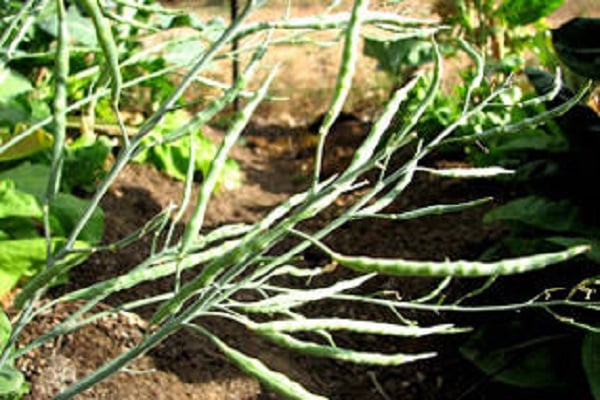

The pods ripen at different times within 30-50 days. It is important not to miss the moment and not let the very first seeds wake up on the ground. They will produce the strongest and healthiest seedlings in the future.
Before collecting the seeds from the pods, they are tied into small sheaves and hung to dry. For a season, one plant can get 30-50 g of healthy seed. The collected seeds are stored in paper or cloth bags for 3-4 years.
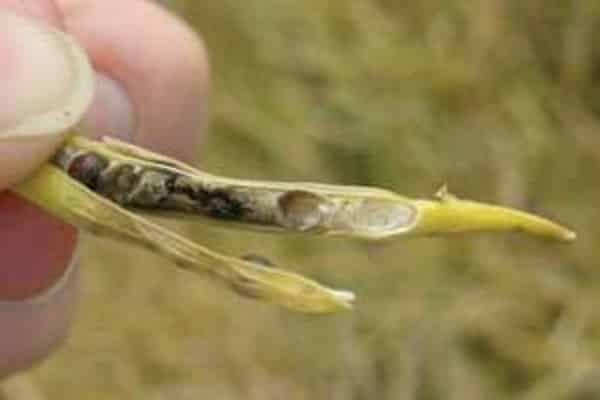

Biological features of culture
Cabbage belongs to the Cruciferous family and has a two-year ripening period. Such a culture is propagated by seeds in the second year of life. As a rule, at this time, in place of the head of cabbage, long arrows develop, on which pods with seeds 8–10 cm long are formed. In this case, the stem itself often grows up to 160 cm or more (depending on the variety).
It is worth noting that some varieties of white cabbage can shoot arrows in the first year of life. But in this case, the seed is most often not yet ripe and will not give the expected yield. The same goes for hybrids. Many summer residents, planting varieties with the designation F1 on mother plants, are surprised why the seeds do not sprout. Meanwhile, already in the second generation of hybrid varieties, the original qualities are completely lost, and at the genetic level, the characteristics of one of the varieties used in the breeding process appear.

